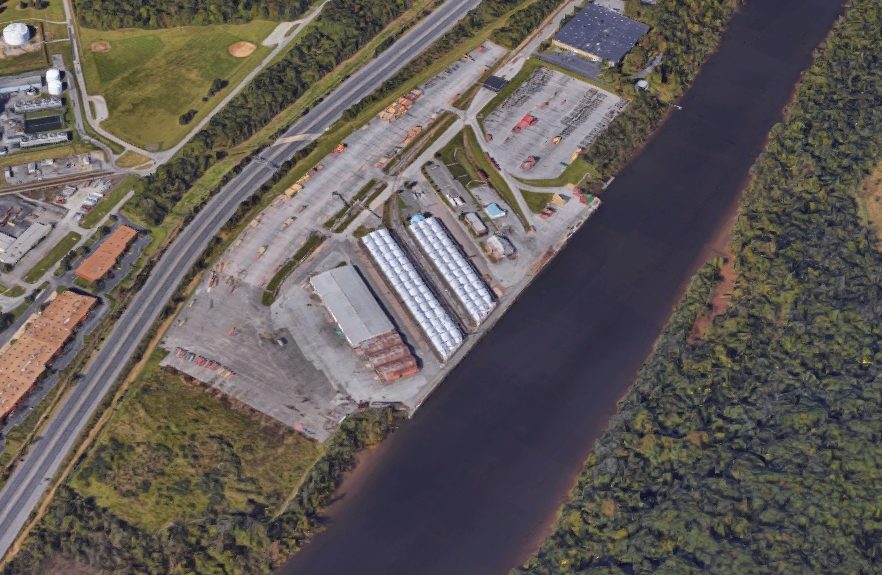1940
5000 Deepwater Terminal Rd
Richmond was founded along the falls of the James River, the highest navigable point for shipping and the natural terminus for commerce and transport. In addition to the docks in Shockoe, Warwick, another port, was founded around 5 miles south on the James. The town was destroyed in 1781 by British troops during the Revolutionary War. The site of Warwick has been occupied by the Port of Richmond since its opening in 1940.
The Port of Richmond, also known as Richmond Marine Terminal, is a cargo port owned by the City and operated by the Port of Virginia, the commonwealth’s port authority. It is part of the Commerce Road Industrial Area, a collection of industrial facilities and offices centered around Interstate 95 and Bells Road. The port used to handle sea-going vessels, but service was discontinued in 2011 leaving only an intermittent barge service from Hampton Roads.
Despite its current disuse, the port has a number of advantages that may lead it to a resurgence. It is the westernmost port on the Northeast coast, and the closest to Interstate 95 which is directly adjacent. It also has direct access to CSX train lines and containers can be transferred locally to Norfolk Southern routes.
Perhaps the most important catalyst for revitalization at the Port of Richmond is congestion in Hampton Roads. The Hampton Roads ports are among the busiest in the country and the docks and roads that serve them have high volumes and increasing demand. The Port of Virginia has stated that it would like to make barge service at the Port of Richmond daily and reintroduce seafaring vessels. In early 2016, the Port of Virginia signed a 40 year lease extension for the Port of Richmond, a time frame which will allow it to make major investments in the port’s infrastructure and operations.
DOK


Write a Comment